Seeking Replacements for Aperture (Part 2): Darktable, Nikon Capture NX-D and Corel AfterShot 2 Pro - Putting them Through their Paces

AMITIAE - Friday 8 May 2015
|
Seeking Replacements for Aperture (Part 2): Darktable, Nikon Capture NX-D and Corel AfterShot 2 Pro - Putting them Through their Paces |
 |
|
|
By Graham K. Rogers

Each application has its own download and installation process: Darktable and After Shot Pro requiring the user to drop an icon into the Applications folder; the Nikon software needed a download of an app to download and install the software . Instead of a single application, the Nikon software resides in a folder that contains other applications (Capture NX-D, Nikon Message Center and Picture Control Utility), each in its own nested folder, along with three separate installers. This, along with the generally bland Nikon site, moved this choice down the most-favoured software list. I started each app separately for a sense of how it might work and to avoid any interference from the others. I began with Darktable. I was warned when I started each of them that the app had not come from a known site. My first task was to see if the Aperture libraries were visible and available. If so, this would save me a considerable amount of work. To be honest, I was not expecting to be able to access these; but at least I tried.
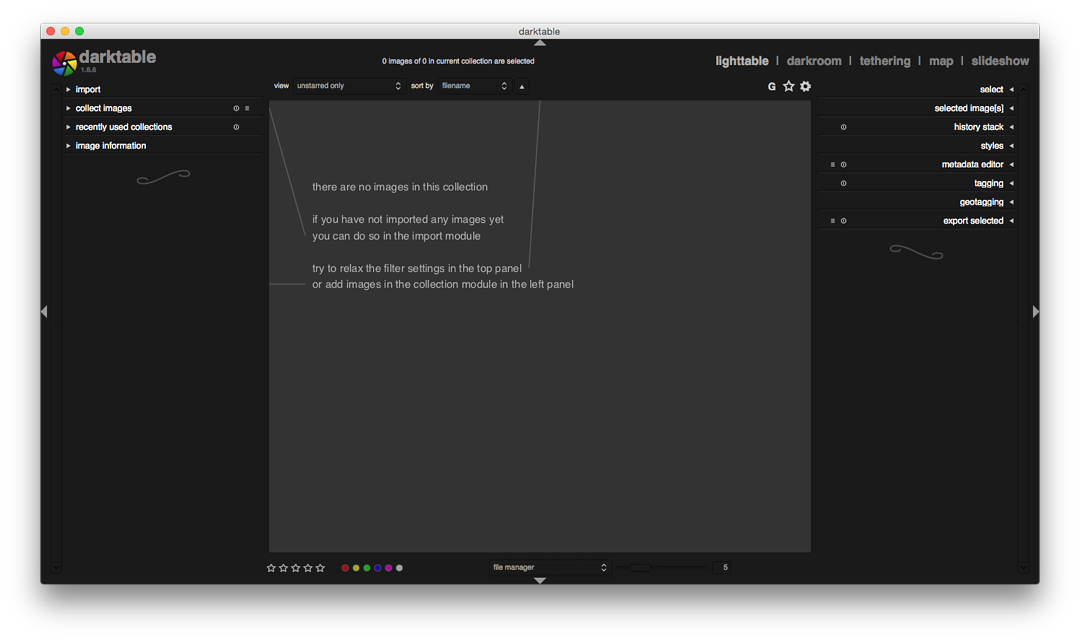
I tried the folder option. The display showed a Unix-like hierarchy and I saw in the display, Volumes, which led to the hard disk I was after. I had to navigate into a Pictures folder where the Aperture libraries were stored, but nothing was shown. I would have to export images using Aperture (or other means) and then import the originals. I cancelled the operation and tried Image: there was a single JPG on the desktop. Dragging the image into the application, displays it on the Lighttable. I was able to view metadata (slightly more than is available with Photos) as well as edit certain parts, such as copyright information.
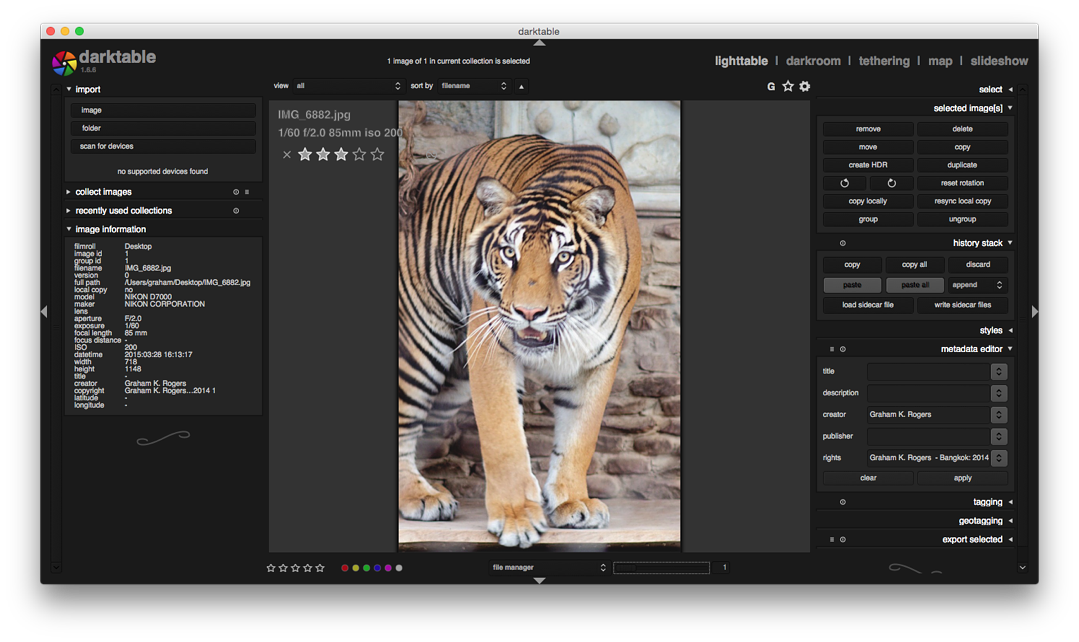
I found the application in the Finder and used Control + Click to bring up a menu. The top item was Open. This time I was asked if I was sure. I was asked to select a location for a folder which would store settings, cache and user data. For now, I am using the default, but note that this could be changed later. A folder for the catalogue was also needed. For the time being I accepted the default location: the user's Pictures folder. It is said that first impressions are most important. I immediately liked what I saw when this opened although some of the selectors seemed a little odd as their titles were displayed vertically. This was really quite instinctive though.
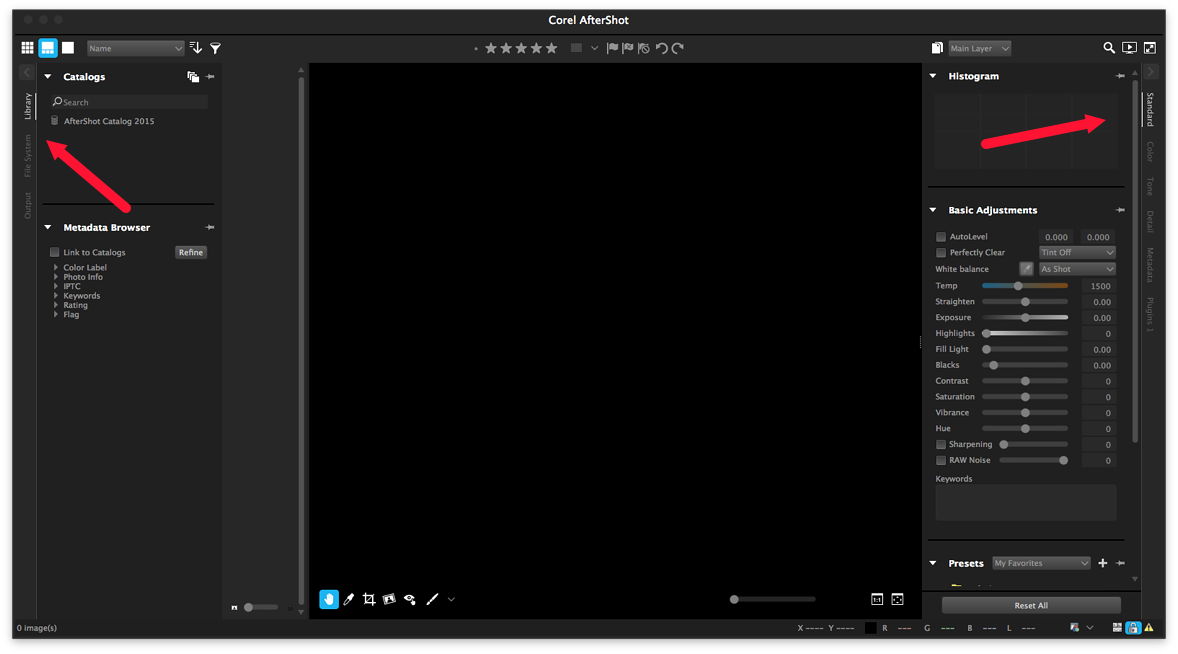
I was able to see the libraries using the Import menu, but they were all greyed-out. Instead I used the Open file option and brought in the same JPG I had used earlier. I noted then that screen-shots on the Desktop were greyed-out. These are PNG files which are not supported.
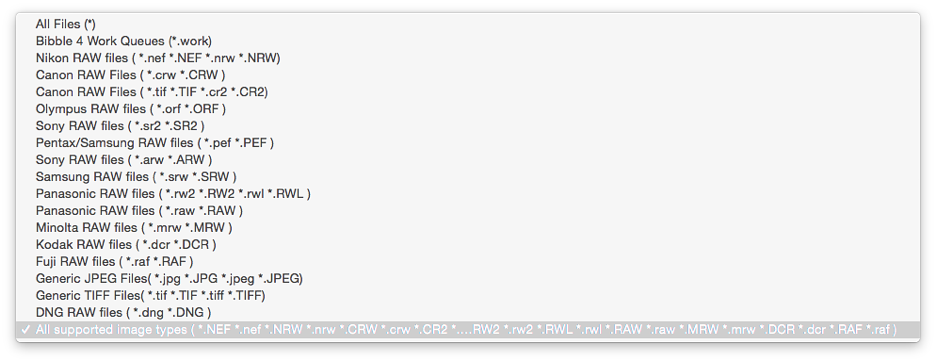
This initial look at Darktable was promising, but I needed that larger image import to make a better assessment.
When I tried to look inside some of the folders on the external disk, the application crashed. It only did this one time. When I tried again, some images were found, but (like the others) the Aperture libraries were not accessible. I brought in the same image I had used before but at this early stage it was not clear how (or if) I could import to Capture NX-D. This was a problem that would be reflected in each of these applications.
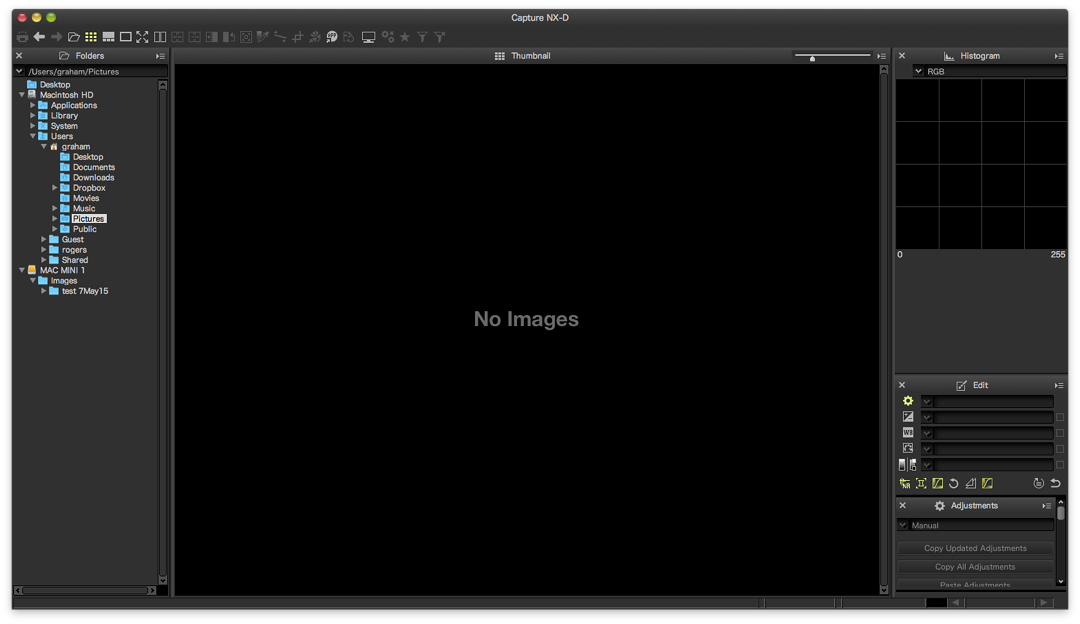
I also wanted to see if it were possible to remove one (or more) of the applications from my assessment. Each has its own good points and weaknesses, so there is no quick-death option for me here. To try and choose which of these might be a valid replacement for when Aperture eventually disappears, I needed to try some realistic tests, including direct imports from a camera which Aperture does so well (Photos a little less).
See also
Graham K. Rogers teaches at the Faculty of Engineering, Mahidol University in Thailand where he is also Assistant Dean. He wrote in the Bangkok Post, Database supplement on IT subjects. For the last seven years of Database he wrote a column on Apple and Macs. He is now continuing that in the Bangkok Post supplement, Life. |
|

For further information, e-mail to
Back to
eXtensions
Back to
Home Page